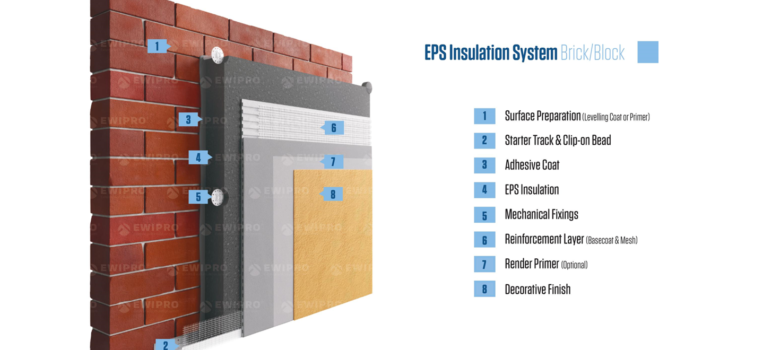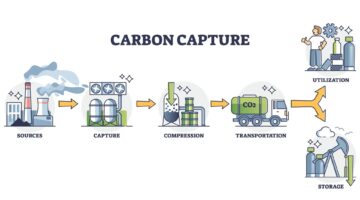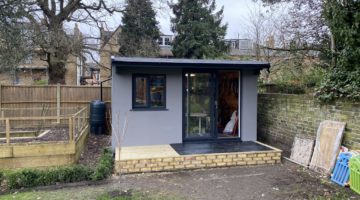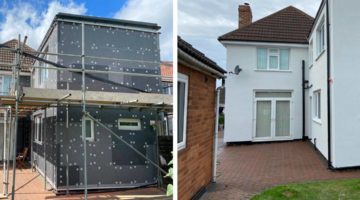
External wall insulation is fast becoming one of the most popular ways to insulate a home. It’s perfect for solid wall buildings, where cavity insulation is impossible and internal insulation would mean sacrificing too much space. It’s also a chance to update the look of your home, with options ranging from brick-effect finishes to coloured renders and more.
The problem with external wall insulation is understanding your different options. The main aim is to be warmer, of course, but what about cost? Effectiveness? Environmental impact?
In this article, we’ll take you through your options, and discuss which is the best external wall insulation system for you. We’ve split it into two categories – the insulation material itself, and the render that covers the system.
Insulation
Expanded Polystyrene (EPS)
Imagine the little polystyrene balls in a beanbag, but packed together to make a board. EPS is by far the most common external wall insulation material, owing to the fact that it’s cheap, light, and easy to work with. It’s so light because the trapped air bubbles prevent heat from transferring from one side of the board to the other.
The only problem with EPS is that it’s god a pretty dismal fire rating of an E. When used in a properly installed external wall insulation cladding system, this shouldn’t matter, since the EPS is integrated into a full covered system. The fire would come up against the barrier of the render before it ever got to the insulation, and render a much higher fire rating.
Mineral Wool
Mineral wool is a lot like the itchy rolls of insulation that get used for loft insulation. In an external wall system, the mineral wool is compressed a lot more, to make it into a rigid board. Unlike EPS, it’s got a high fire-resistance rating, and it also boasts great soundproofing qualities.
The downside of mineral wool is that it’s much heavier than EPS or Kingspan and more difficult to work with, meaning that the labour costs of installing it tend to be higher. It also lags behind some of the others on this list for insulation values, meaning that you need more of it to achieve the same result.
Wood Fibre

It has the lowest thermal properties of any of the forms of insulation we’ve mentioned here, and it very heavy, but for many people this will be outweighed by the eco-friendly credentials.
Kingspan K5
Kingspan are producers of Kooltherm K5, another type of insulation we love. It’s a rigid pink phenolic board, and has the best thermal performance of any insulation on this list. It’s also super light and easy for installers to work with.
The downside of Kingspan K5 is that it’s a lot more expensive than alternatives like EPS. If you’re tight on space or don’t want your insulation as thick, it’s a great option, but beware of the price tag.
Render
Silicone/Silicone Silicate Render
Silicone is the premium, top-notch render choice, the real big hitter for the best external wall insulation system. It’s so popular because it’s breathable, hydrophobic (which means it repels dirt and organic growth) and can be custom mixed to any colour you want. The pigment is in the render itself, so you don’t need to paint over it or worry about paint chipping.
Acrylic Render
The more cost-effective alternative to silicone renders, acrylic provides the same flexibility and colour options, but doesn’t have the hydrophobic properties. It’s a great choice for most people, just be aware that it requires a little more upkeep than silicone-based renders.
Monocouche Render
Using traditional methods and just one coat, monocouche is a scratch render system, which means the finish is a lot more durable than other renders. It comes premixed, so it’s a favourite of installers, however it is relatively inflexible so can crack over time.
Sand & Cement Render
A simple, no-fuss render, made simply by maxing 6 parts sand with 1 part cement. It’s super cheap, but cracks can be caused by shrinkage or natural movement of the structure. Although cost-effective, we would never recommend using a sand and cement render on an external wall insulation system.
Installing External Wall Insulation?
Looking for a trusted installer for your external wall insulation project? We’ve got you covered. Just fill in the form below and someone will be in touch with you as soon as they can.












Great information
Provided a good overview of external wall insulation.
Incredibly useful information! This is exactly what I’m looking for, and you’ve done a fantastic job! Continue to write.
It seems to me that some key information is missing from this article – what about end of life processing of each material? Does Kingspan end up in landfill? I think that is an extremely important consideration in choosing what material to use, especially when considering on a large scale.